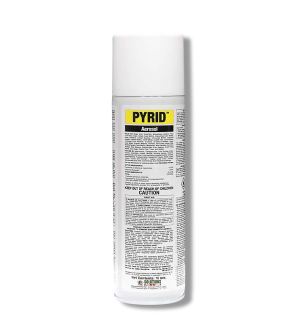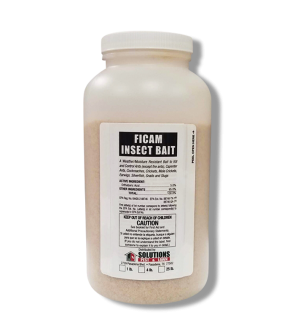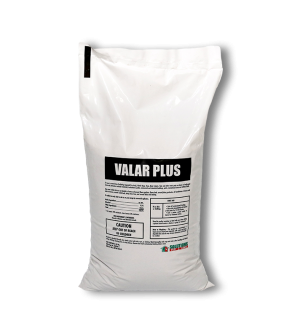How to Protect Pollinators
Most Effective Products
How to Protect Pollinators
This page is a general DIY article for safely applying pesticide and insecticide products for pollinating insects like bees. By using the recommended steps and tips you can safely apply any product without harming any pollinating insects in your yard and effectively control insects harming your turf.
There are thousands of species of pollinators and each one provides a special service to your lawn, crops, and foliage. Pollinators include bees, butterflies, moths, beetles, flies, and some vertebrate animals such as birds and bats. While each one of these species are necessary for plant life, the most recognized one is the bee, specifically the honeybee.
The health of pollinators, such as bees, has been noticed to take a significant decrease in populations. There is no modern data that suggest these insects are endangered, but many believe that through the loss of habitat and application of insecticides we are quickly killing these beneficial insects. While there is some truth in some insecticides being harmful to bees and other pollinating insects this can be avoided by selecting a non-systemic insecticides and applying when pollinators are not active.
By reading this DIY article, you can take control of your local pollinator population and learn what professional quality products to use for treating chewing and sucking insects on your trees, shrubs, plants, and oriental foliage. If you have any questions then you are always welcomed to call, email, or even stop by one our stores to speak with a trained professional.
Pollinators and their Importance

Pollinators are animals or insects that are responsible for the creation of new plants or flowers. You may ask how pollinators such as bees, butterflies, moths, beetles, flies, birds, and bats are responsible for your new flowers or vegetation. When these pollinators come into contact with your blooming or budding plant they take the pollen from a male flower on their fur, shell, or feathers and transfer them to a female flower.
Once the pollen meets the same species of plant it will cause fertilization and help the female flower to produce seeds and fruit.
This matters to you because pollinators are responsible for the food in your kitchen and the ingredients that some medicine needs in order to be produced. Pollinators are also responsible for clothes you are wearing since clothes are often made out of cotton plant material.
How to Help Pollinators
To help increase the diversity and populations of these beneficial insects follow these simple steps.
1. Plant and Grow More Native Flowers in Your Garden

Like us, pollinators enjoy the beauty of plants and flowers in our garden. Growing native plants not only adds to the beauty of your yard, but also attracts pollinators to it. Many species of pollinators in your area depend on a type of flower, foliage, or plant and by planting more local vegetation then you are increasing their food supply.
Non-native plants in your garden or yard may look pretty, but they do not provide enough nectar, pollen, and possibly be inedible to some species of pollinators.
2. Provide Shelter

To invite more pollinator insects to your garden and deter them from creating nests in undesirable areas such as trees, shrubs, porch ceilings, and inside the walls of your home create nest boxes.
A nesting box should be created several feet away from your home and the area of your yard you frequently visit. If you have a garden directly next to your home we suggested replanting it in the corner of your property or part of your yard where pets and children cannot directly access it.
To create a nesting box for pollinating insects such as bees, select 4 flat pieces of lumber wood measuring 7 X 7 X 7, these dimensions can be altered to your liking. Create a square shaped structure by either hammering in nails on each corner of the wood or glue each side together with super glue. Once you have the sides formed together into a square shape you will drill several medium sized holes into the front end of the structure.
You will mount your insect pollinator nesting box on a pole at least 2 meters high.
3. Spread the Word

You can help your local pollinators by simply spreading the word to your friends through conversation or sharing this article across social media. When you share the information from this article you are spreading awareness about the impact these pollinators make and how to make the necessary adjustments to increase their population.
For those homeowners who are facing an overabundance of bees, moths, beetles, or flies you can effectively control the populations by following the links to each species guide.
Protect Pollinators When Applying Insecticides
Supporting your lawn and pollinators is often a difficult task. There are many products on the market that can be toxic to pollinators such as bees, but by following the recommended steps you can help to save these populations.
Before beginning any pesticide or insecticide treatments make sure to wear the appropriate personal protective equipment (PPE) that will protect your hands, mouth, eyes, face, hands, and feet.
When using any insecticides or pesticides be mindful of what time of day you are applying these products. Most pollinating insects, such as bees or moths, forage for food during the day and return to their homes in the late evenings. Thus, you will want to apply your pesticide or insecticide in the evening when these beneficial insects are less active.
The next thing you will want to do is choose a non-systemic insecticide. A systemic insecticide will directly absorb into the plant tissues and not rest on the leaves surface minimizing contact for pollinators. However, if a pollinator insect ingest these plants nectar or pollen they may open to the products effects. By applying in the evening and choosing a non-systemic insecticide you are helping to increase the pollinator population.
Step 1: Directly Spray Unwanted Insects with Pyrid Aerosol

For direct contact kill of pests, like flies or cockroaches, we recommend using Pyrid Insecticide Aerosol.
Pyrid Insecticide Aerosol is perfect for direct contact or space spray on the inside or outside of your home. Using this product is ideal for easier control and helps to avoid unnecessary elimination of beneficial insects.
To use this product you will simply shake the can and move all objects not desired to be sprayed out of the way. If applying inside make sure to turn off all fans and air conditioner to control spray drift. Apply a rate of 1 to 3 seconds per 1,000 cubic feet. Within 10 minutes of application you should see target insects die.
After application, wait 15 minutes before you or your children and pets enter the treatment area. Once the appropriate amount of time passes wipe and clean any surfaces you have sprayed.
Pyrid does not leave a long lasting residual and requires direct application to targeted pests, making this a great option for minimizing non-target insect contact.
Step 2: Apply Ficam Insect Bait

Ficam Insect Bait is a recommended granular product that is used as a bait to control invasive pests.
As a bait this product will specifically attract certain species of lawn harming pests. Insects that eat this material will die within two weeks and spread the product back to their colonies believing it to be food. Since this is a granular bait product you will need to use a handheld duster for crack and crevice applications around the exterior of the home or structure. Ficam can also be applied from the container for spot or barrier treatments.
With your selected duster, apply at a rate of 2 lbs. per 1,000 sq. ft. Another feature of this product is its resistance to outside weather condition and moisture making it last longer on your turf and plants.
Ficam Insect Bait is an ideal product to use to control target pests without harming beneficial insects. Pollinators will not be affected by this bait product because it is not their primary food source.
Step 3: Treat Outside of Your Home with Valar Plus Bifenthrin Granules

Valar Plus Bifenthrin Granules is a granular insecticide that controls many species of insects and fights against them for up to 3 months.
It is ideal to use to treat for insects because most pollinators will not come into direct contact with these granules unless they crawl or walk along the surface of the soil.
You will first need to determine how much Valar Plus Bifenthrin Granules to use by calculating the size of your treatment area. To do this, you measure the length and width of the treatment area and then multiply together (length X width = square footage).
For a general application, you will want to use 2.3 lbs. of product per 1,000 sq. ft. Spread the appropriate amount of product through either a hand or broadcast spreader. Make sure to water your lawn after application to activate the granules.
Key Takeaways
What are Pollinators?
- Pollinators are animals or insects that carry pollen and seeds between plants. Most common pollinators are bees, butterflies, moths, beetles, flies, birds and bats.
What Insecticides or Pesticides are Safe to Use for Pollinators?
- The best insecticides to use are ones that do not drift, or remain on the surface of plant leaves such as non-systemic. Always refer to the product label to see what pests are specifically targeted.
What Measures Should I take to Control Pollinator Populations?
- To effectively control pollinator populations apply pesticide or insecticide products late in the evening when they are less active. Provide shelter and abundant food sources such as native plants and flowers. For best results, move gardens away from your homes to avoid less contact with pollinator populations.













































































































































































































































































































































































































































































































































